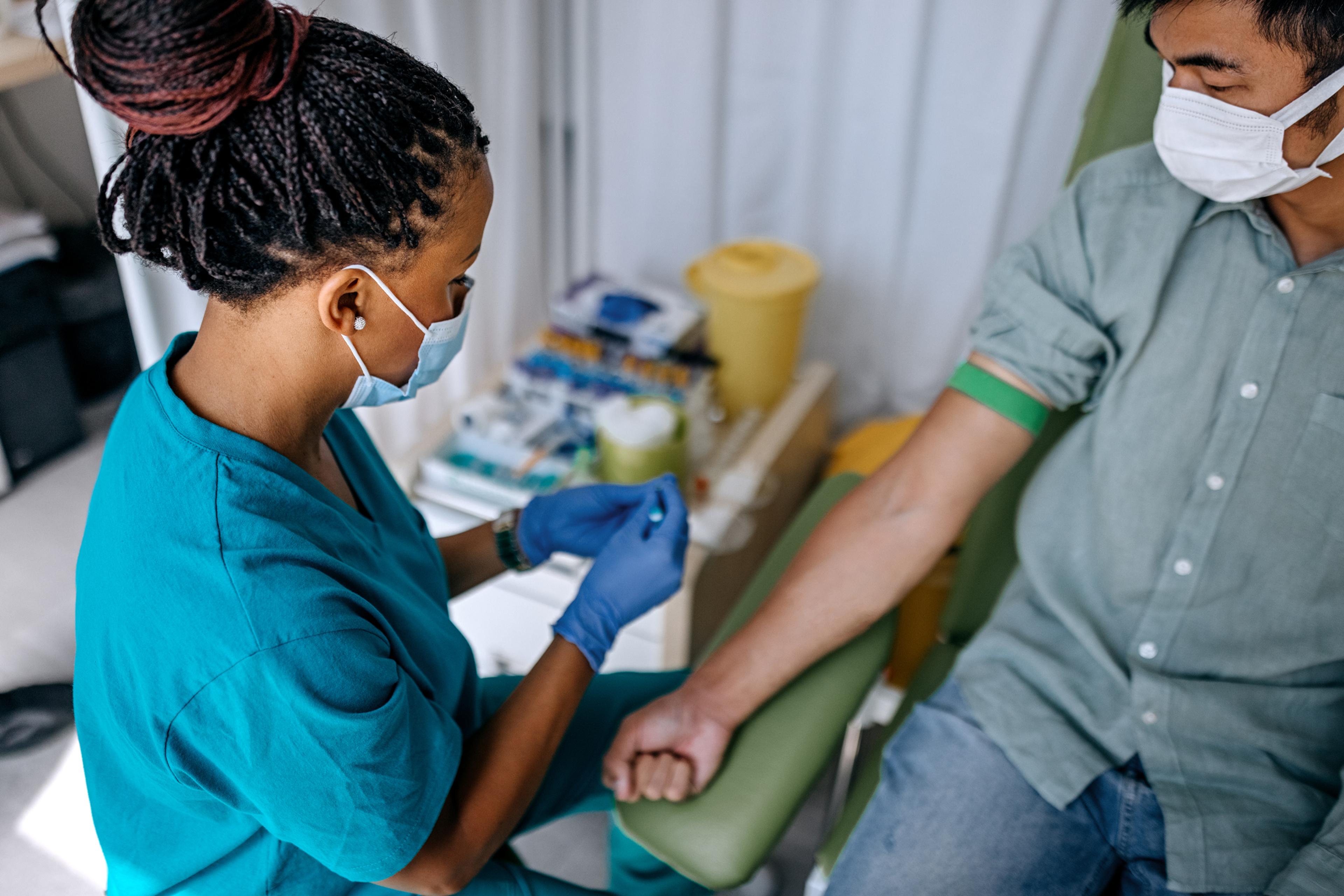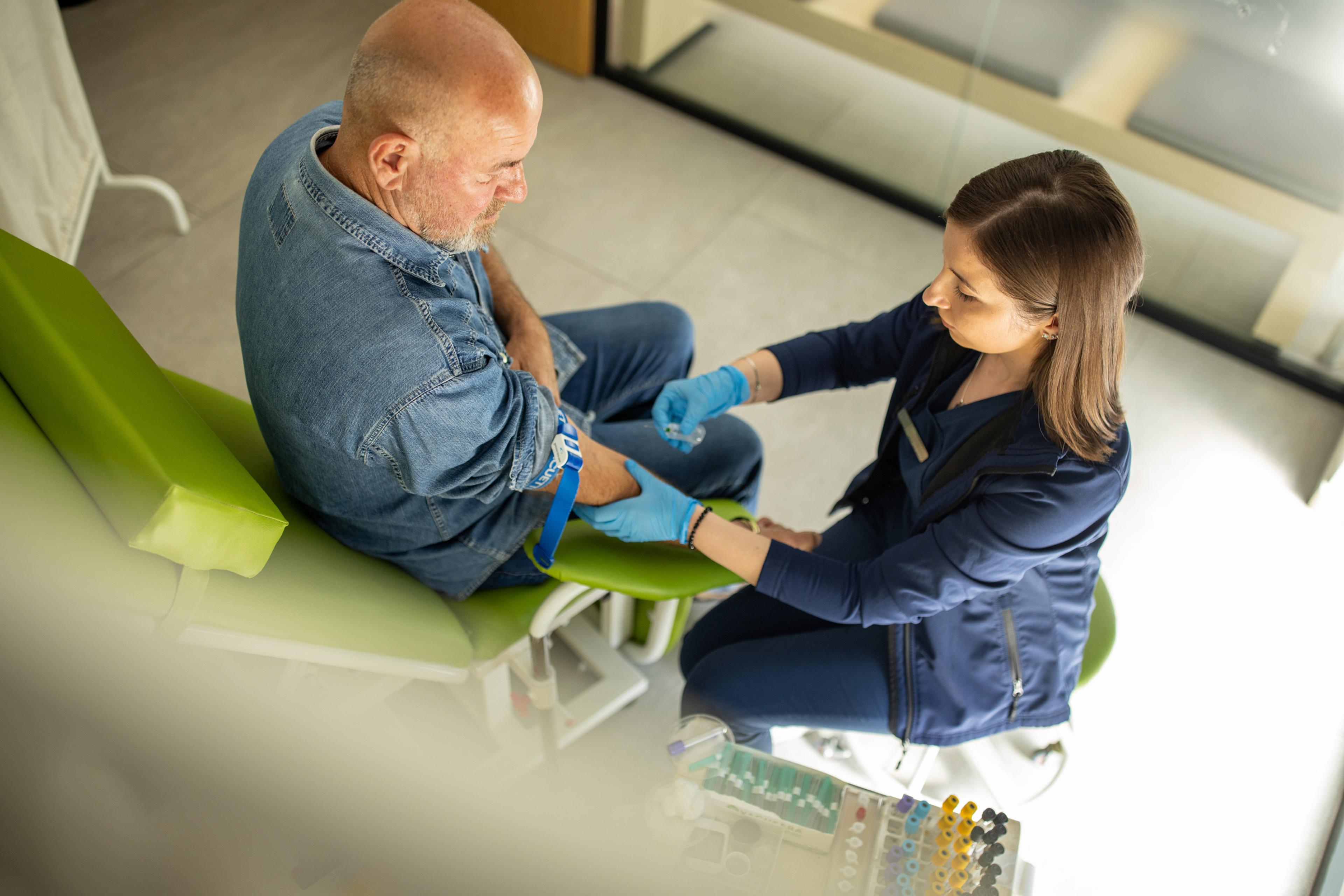Diabetes Screening: What You Need to Know
Amy Barczy
| 4 min read
Amy Barczy is a former brand journalist who authored content at Blue Cross Blue Shield of Michigan. Prior to her time at Blue Cross from 2019-2024, she was a statewide news reporter for MLive.com. She has a decade of storytelling experience in local news media markets including Lansing, Grand Rapids, Holland, Ann Arbor and Port Huron.

Diabetes screenings are an important part of annual physicals in order to stay healthy. More than 37 million U.S. adults have diabetes – yet one in five don’t know they have it. Far more have prediabetes: more than 96 million U.S. adults have prediabetes – which raises your risk for type 2 diabetes, heart disease and stroke. Catching prediabetes early is important, as lifestyle changes can help you take steps to reverse it.
For individuals with diabetes, managing their condition under the care of a doctor is important to ensure you’re taking medication as prescribed and following a treatment plan.
It’s important to make an appointment for an annual physical with your health care provider to ensure you’re staying on top of your health.
What is diabetes?
Diabetes is a chronic condition that affects how your body processes food into energy.
When people digest food, carbohydrates and starches break down into blood sugar, also known as blood glucose. This triggers the body to produce insulin, a hormone naturally made by the pancreas to regulate glucose levels in the blood.
When a person has diabetes, their body either doesn’t produce enough insulin or doesn’t produce any at all, leading to unregulated blood sugar. As a result, an individual managing this condition must ensure their body has enough insulin to compensate.
There are several types of diabetes:
- Type 1 diabetes was previously known as juvenile diabetes because it usually develops in children and young adults. But Type 1 can occur at any age. With this form, the body cannot produce insulin at all.
- Type 2 diabetes, in which the body cannot produce enough insulin or the body’s insulin is unable to store excess blood sugar properly. Although there is no cure, Type 2 can be managed with exercise, diet and medications (if prescribed). Type 2 diabetes can often be prevented with healthy lifestyle changes.
- Prediabetes: A diagnosis for this condition is given when blood sugar levels are higher than normal, but not yet high enough to be diagnosed Type 2.
- Gestational diabetes occurs in pregnant women when their bodies are not producing enough insulin, or they are unable to store excess blood sugar. It’s typically diagnosed around week 24 and is subject to all women regardless of their diabetic history.
What is a diabetes screening?
There are several types of tests that can be used to screen for diabetes. All involve a blood test. Here are the different types:
- A1C test: This measures your average blood sugar over the past two to three months. A1C below 5.7% is normal, 5.7% to 6.4% indicates prediabetes and 6.5% or higher indicates diabetes.
- Fasting blood sugar test: This measures your blood sugar overnight without eating. A level of 99 mg/dL or lower is normal, 100 to 125 mg/dL indicates prediabetes and 126 mg/dL indicates diabetes.
- Glucose tolerance test: This measures your blood sugar before and after drinking a high-glucose drink. You fast before taking a blood test and then drinking a high-glucose liquid and having your blood drawn over several hour-long intervals. Your doctor will help you interpret the results.
- Random blood sugar test: This measures your blood sugar at the time you’re tested. A level of 200 mg/dL indicates diabetes.
Screening for gestational diabetes also relies on blood tests:
- A glucose screening test involves drinking a high-glucose liquid, and then having your blood drawn to check your blood sugar level. If the level is higher than a certain threshold, you’ll be asked to take a glucose tolerance test.
- In a glucose tolerance test, you fast before taking a blood test and then drinking a high-glucose liquid and having your blood drawn over several hour-long intervals. Your doctor will help you interpret the results.
When should I be screened for diabetes?
Adults should be screened for prediabetes and type 2 diabetes beginning at age 35 with a blood sugar test. Continue screening every three years if you have no risk factors or normal results.
What are the risk factors for diabetes?
Some risk factors for diabetes cannot be controlled, such as:
- Genetics
- Race
- Ethnicity
- Age
- Medical history
Other risk factors are lifestyle choices that can be controlled. Talk to your health care provider about your personal health history and risk factors, as well as your diet and lifestyle, to see what you can do to improve your overall health.
How do I prevent diabetes?
Certain lifestyle choices can help lower your risk of diabetes. Here are some healthy lifestyle tips to employ:
- Eat nutritious, well-balanced and portion-controlled meals
- Focus on fruits, vegetables, whole grains, lean proteins and heart-healthy fats in everyday meals
- Incorporate exercise and physical activity
- Practice stress management techniques
- Get good sleep
If you are concerned about your risk for diabetes, make an appointment with your doctor to discuss your personal health history and lifestyle.
If you have diabetes, be sure to follow your doctor’s treatment plan – including taking all medications as prescribed – and stay up to date with annual physicals and any additional visits your doctor may recommend.
Learn more about how preventive care can help you live a healthier life here on MIBluesPerspectives.com.
Photo credit: Getty Images





